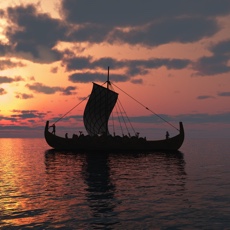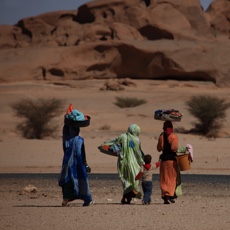23andme DNA composition
Haplogroup T1 may have arrived in England with the Vikings.
I am 75.8% Swiss. Mom is 58.5% Swiss, wow.
Jane, your DNA suggests that 75.8% of your ancestry is French & Swiss/German
 Although T1 is relatively rare in Europe today, it appears to have been much more common at some times in the past. Though it is present in only 2% of the modern English population, T1 was found at levels of 23% in DNA extracted from skeletons buried in Norwich, England during the 10th century AD.
Although T1 is relatively rare in Europe today, it appears to have been much more common at some times in the past. Though it is present in only 2% of the modern English population, T1 was found at levels of 23% in DNA extracted from skeletons buried in Norwich, England during the 10th century AD.
T1
T1
father, Felix Leu Verena Ballmer/Heyman
Rebecca Zuck/Campbell
“French and German” people descend from ancient Alpine-Celtic and Germanic populations, and inhabit an area extending from the Netherlands to Austria – roughly corresponding to the extent of Charlemagne’s Frankish Kingdom in the Middle Ages. Estimates place Charlemagne himself in the family trees of all modern Europeans, possibly many times over. Genetically and geographically, the French and Germans are at the heart of Europe.
Switzerland has 26 administrative regions, and we found the strongest evidence of your ancestry in the following 2 regions.


Jane, your DNA suggests that 6.6% of your ancestry is British & Irish.
The British Isles have been continuously occupied by humans for the last 11,000 years, but more recently, the people of the Isles have left their genetic fingerprints around the world, following centuries of nautical exploration, colonization, and immigration. In the early 20th century, the Republic of Ireland won its independence from the United Kingdom, but the people of these nations share a common genetic heritage rooted largely in Celtic, Anglo-Saxon, and Viking migrations from northwestern Europe.
Jane, your DNA suggests that 4.3% of your ancestry is Scandinavian.
Scandinavians – represented by the people of Norway, Sweden, Denmark, and Iceland – owe much of their linguistic and genetic heritage to North Germanic tribes who established settlements around the North Sea during the late Middle Ages. Many Scandinavians, like the Sámi people in the far north, are descendants of early Scandinavian hunter-gatherers. In the United States, Scandinavian ancestry is most common in North Dakota.
You and Filip share a paternal-line ancestor with Niall of the Nine Hostages.
R-M269 common ancestor
10,000 years ago
The Uí Néill Dynasty
FL
You
The spread of haplogroup R-M269 in northern Ireland and Scotland was likely aided by men like Niall of the Nine Hostages. Perhaps more myth than man, Niall of the Nine Hostages is said to have been a King of Tara in northwestern Ireland in the late 4th century C.E. His name comes from a tale of nine hostages that he held from the regions he ruled over. Though the legendary stories of his life may have been invented hundreds of years after he died, genetic evidence suggests that the Uí Néill dynasty, whose name means "descendants of Niall," did in fact trace back to just one man who bore a branch of haplogroup R-M269.
The Uí Néill ruled to various degrees as kings of Ireland from the 7th to the 11th century C.E. In the highly patriarchal society of medieval Ireland, their status allowed them to have outsized numbers of children and spread their paternal lineage each generation. In fact, researchers have estimated that between 2 and 3 million men with roots in north-west Ireland are paternal-line descendants of Niall.
Origins of the haplogroup RL20
F-M89 to K-M9 to R-M207 to R-M343 to R-M269 to R-L20Origin and Migrations of Haplogroup R-M269
Your paternal line stems from a branch of R-M343 called R-M269, one of the most prolific paternal lineages across western Eurasia. R-M269 arose roughly 10,000 years ago, as the people of the Fertile Crescent domesticated plants and animals for the first time. Around 8,000 years ago, the first farmers and herders began to push east into Central Asia and north into the Caucasus Mountains. Some of them eventually reached the steppes above the Black and Caspian Seas. There, they lived as pastoral nomads, herding cattle and sheep across the grasslands, while their neighbors to the south developed yet another crucial technology in human history: bronze smelting. As bronze tools and weaponry spread north, a new steppe culture called the Yamnaya was born.
Around 5,000 years ago, perhaps triggered by a cold spell that made it difficult to feed their herds, Yamnaya men spilled east across Siberia and down into Central Asia. To the west, they pushed down into the Balkans and to central Europe, where they sought new pastures for their herds and metal deposits to support burgeoning Bronze Age commerce. Over time, their descendants spread from central Europe to the Atlantic coast, establishing new trade routes and an unprecedented level of cultural contact and exchange in western Europe.
H1e
H1

Women carry laundry in the Sahara, home to the Tuareg.
Though haplogroup H1 rarely reaches high frequencies beyond western Europe, over 60% of eastern Tuareg in Libya belong to haplogroup H1. The Tuareg call themselves the Imazghan, meaning “free people.” They are an isolated, semi-nomadic people who inhabit the West-Central Sahara and are known today for a distinctive dark blue turban worn by the men, and for their long history as gatekeepers of the desert.
How did women carrying H1 make it all the way from western Europe to this isolated community? They likely migrated from Spain across the Strait of Gibraltar into Morocco after the Last Ice Age, where they were assimilated into the Berbers of the Mediterranean coast. Then, about 5,000 years ago, the Sahara shifted from a period of relative habitable conditions to its dramatically arid desert environment. This shift may have caused migrations throughout the Sahara, prompting the ancient Tuaregs to meet and mingle with the Berbers, bringing H1 lineages into their population.













Comments
Post a Comment